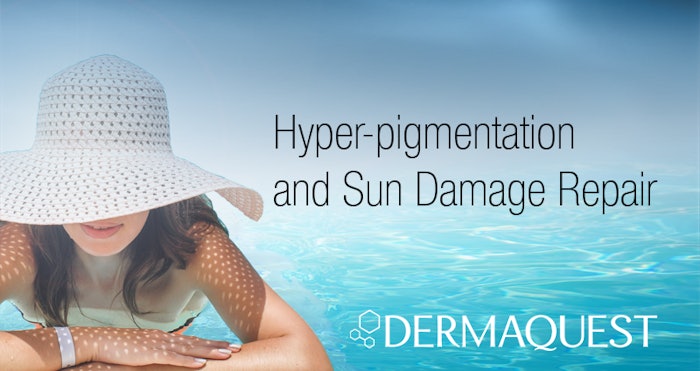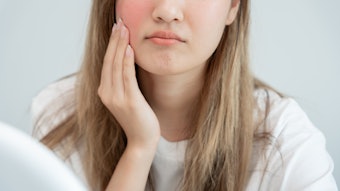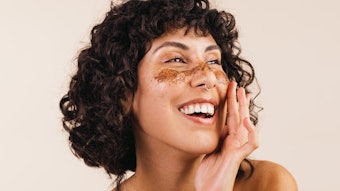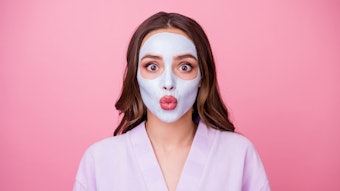
Treating hyperpigmentation is a complex and sometimes frustrating process. The probing question is what direction will you take to achieve a brighter, more even skin tone for your clients? Lasers, chemical peels, mechanical resurfacers, hydroquinone or no hydroquinone? Are natural ingredients going to be effective? The truth is any of these options can be impactful on the right individual.
The Basics of Pigmentation
The varieties of hyperpigmentation that you will most likely be facing in your treatment room are either from an intrinsic or extrinsic source. Post Inflammatory Hyperpigmentation (PIH), melasma and solar lantigo are commonly sought out for treatment. Doing an extensive consultation, a skin analysis and taking lifestyle habits into consideration is just the beginning. Results are contingent upon identifying the type of pigmentation. Having the proper tools and prescribing a diligent home care routine is most necessary when tackling this common skin concern.
To break it down simply, cytokine messengers, melanocyte-stimulating hormone and UV radiation are a few triggers in activating melanogenisis (the process of making color). When exposed to UV radiation, the body will produce more melanin to create a protective barrier. This expresses more pigment and thickens the stratum corneum. This process is similar when you experience a physical blow or a healing skin lesion. Melanin (color) production is catalyzed by tyrosinase (an enzyme), resulting in either eumelanin (black/brown) or pheomelanin (red/yellow) pigment. Melanin within the melanosome is then transferred through dendritic melanocytes to keratinocytes supplying pigment, which is diffused within the skin.
Peptides
With so many powerful ingredient options on the market and technology to back them, more aggressive treatments are no longer the be-all and end-all to hyperpigmentation.
Chromabright (Dimethylmethoxy chromanyl palmitate) is a peptide that has shown remarkable results in the interruption of melanin synthesis. Researchers have compared results of Chromabright to hydroquinone. Hydroquinone has been a front runner in treating hyper-pigmentation but became controversial due to potential undesirable side effects and is illegal in some countries. The latter peptides are chains of amino acids (proteins) naturally occurring in your body with no evidence of cytotoxicity.
"With so many powerful ingredient options on the market and technology to back them, more aggressive treatments are no longer the be-all and end-all to hyper-pigmentation."
Mushroom
ViaFerm White Shiitake (Lentinus edodes mycelium extract) has strong clinical research that is proven its ability to reduce pigmentation through the fermentation of white shiitake mushroom. This process causes an enzymatic catalytic modification that is shown to modify melanin’s natural chromophore, resulting in the degradation of unwanted melanin.
Licorice
Licorice extract is being more utilized in skin care because of its brightening and anti-inflammatory benefits. Licorice is comprised of glabridin which has shown to aid in the prevention of UVB pigmentation and inhibits tyrosinase activity. Liquiritin is a glycoside flavonoid found in licorice which can induce the dispersion of melanin.
Of course, there are varying factors in regard to post treatment results. The concentration and delivery system of an ingredient should be thoroughly investigated before implementing in any esthetic practice. This is a very exciting time in the skin care industry with so many possibilities. It is safe to say preventative measures are much easier than corrective treatment, however with many more tools available today, pigmentation challenges do not have to be permanent.

About Kat Campbell
Kat Campbell is a national educator for DermaQuest. She is a passionate esthetician and CIDESCO diplomat with over a decade of experience in the beauty industry. Kat's mission is to connect with people on a personal level by making positive changes in the way people feel and look at themselves.
Disclaimer:
The above paid-for content was produced by and posted on behalf of the Sponsor. Content provided is generated solely by the Sponsor or its affiliates, and it is the Sponsor’s responsibility for the accuracy, completeness and validity of all information included. Skin Inc. takes steps to ensure that you will not confuse sponsored content with content produced by Skin Inc. and governed by its editorial policy.










